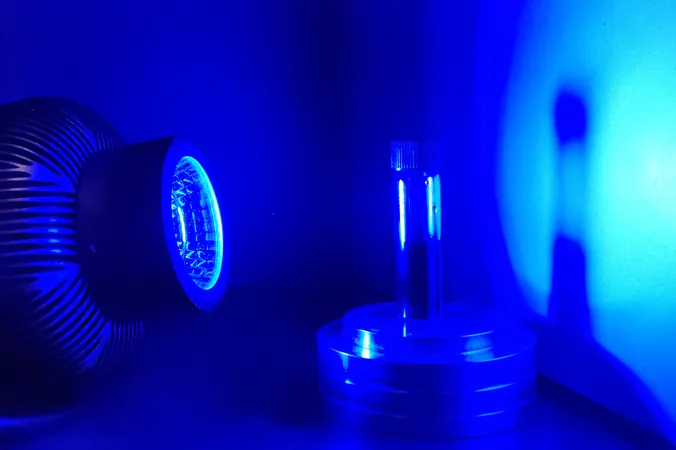
Revolutionary 3D Molecules Pave the Way for Future-Proof Drug Design!
2024-10-23
Author: Mei
Introduction
In a groundbreaking development, a team of chemists at the University of Münster, led by the esteemed Prof. Frank Glorius, has successfully synthesized stable three-dimensional (3D) molecules with heteroatom substitutions. These innovative cage-like structures promise to revolutionize the world of drug design by offering a robust alternative to traditional, flat aromatic rings that have long dominated the pharmaceutical landscape.
Significance of Cage Molecules
Known as "cage molecules," these unique ring-shaped structures exhibit significantly enhanced stability compared to their two-dimensional counterparts. This stability is crucial in drug development, particularly as conventional aromatic compounds often face challenges in maintaining efficacy under physiological conditions. The new 3D molecules could serve as a valuable alternative, addressing some of the critical limitations that researchers encounter with traditional drug structures.
Methodology and Publication
The team’s groundbreaking methodology involves the precise incorporation of a triatomic unit into a strained, high-energy ring during a chemical reaction process. Published in the prestigious journal *Nature Catalysis*, the study reveals a significant leap forward in molecular chemistry and its implications for drug development.
Challenges with Conventional Aromatic Rings
Aromatic rings, which are flat structures made up of carbon atoms, are integral to many pharmaceuticals and agrochemicals. However, their flat geometry can result in instability, often hindering the effectiveness of drug compounds. In response to these issues, scientists have turned their attention to complex 3D structures that are stiffer and inherently more stable.
Breakthrough in 3D Molecular Synthesis
While previous research has already produced some 3D substitutes for simple flat rings like benzene, creating versions with additional crucial atoms such as nitrogen, oxygen, or sulfur—common in drugs—has proven to be much more challenging. These heteroaromatic rings are vital components in a myriad of therapeutic agents.
Innovative Approach of the Münster Team
The Munster team made a remarkable breakthrough by utilizing bicyclobutane, a highly reactive small molecule, and harnessing light energy to trigger the necessary chemical reactions. Prof. Glorius elaborates, "By employing a light-sensitive catalyst, we achieved the precise insertion of nitrogen, oxygen, and carbon atoms into the reactive bicyclic molecule, resulting in the successful synthesis of novel 3D rings."
Potential and Future Applications
Unlike earlier investigations that primarily concentrated on adding carbon atoms, this innovative approach of incorporating heteroatoms leads to the creation of new analogs of cage-like 3D rings, which could potentially replace flat heteroaromatic rings in drug molecules. "These newly synthesized rings not only demonstrate exceptional stability but also offer versatility and ease of modification," adds Dr. Chetan Chintawar, highlighting the potential of these molecules as pivotal building blocks for a plethora of new cyclic compounds.
Reaction Mechanisms and Studies
The research team undertook both experimental and computational studies to delve deeper into the reaction mechanisms involved. The findings suggest the reaction initiates through a light-induced electron transfer, facilitating the creation of these promising new structures.
Conclusion
As this research opens new avenues for drug development, the implications for treating complex diseases are immense. With the potential to design more robust and effective pharmaceutical compounds, these 3D molecules could be the key to the next generation of innovative therapies. As the field of drug design evolves, one thing is clear: the future is 3D!


 Brasil (PT)
Brasil (PT)
 Canada (EN)
Canada (EN)
 Chile (ES)
Chile (ES)
 España (ES)
España (ES)
 France (FR)
France (FR)
 Hong Kong (EN)
Hong Kong (EN)
 Italia (IT)
Italia (IT)
 日本 (JA)
日本 (JA)
 Magyarország (HU)
Magyarország (HU)
 Norge (NO)
Norge (NO)
 Polska (PL)
Polska (PL)
 Schweiz (DE)
Schweiz (DE)
 Singapore (EN)
Singapore (EN)
 Sverige (SV)
Sverige (SV)
 Suomi (FI)
Suomi (FI)
 Türkiye (TR)
Türkiye (TR)